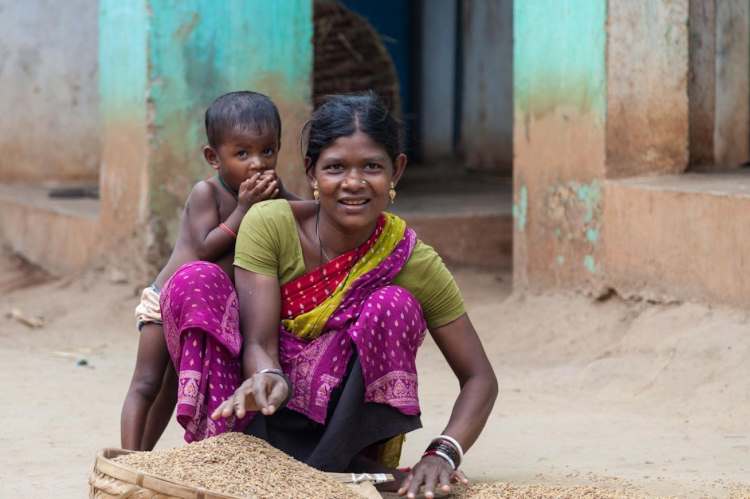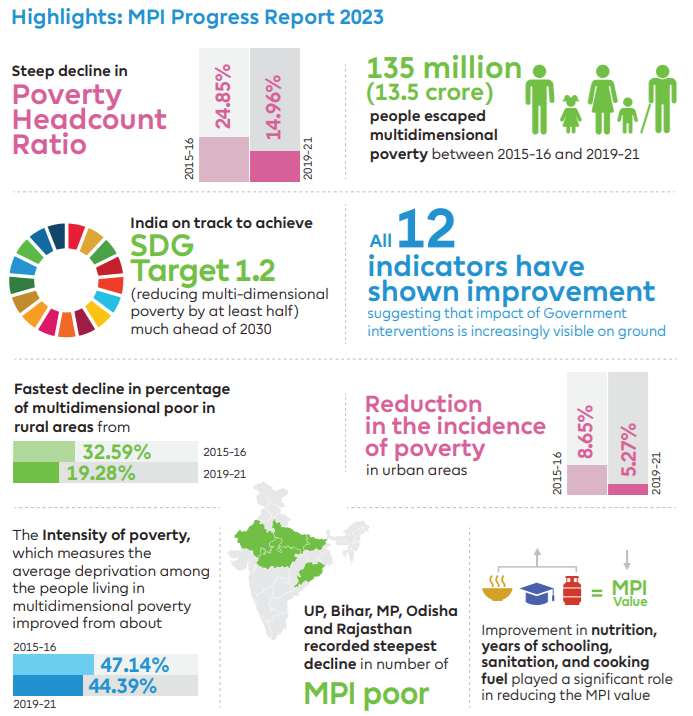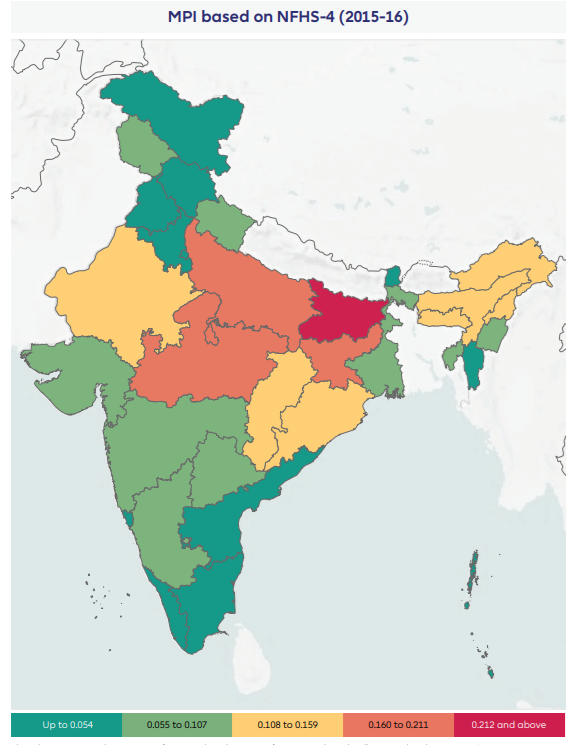
India’s battle against poverty has taken on a new dimension with the introduction of the multi-dimensional poverty index. The MPI, developed in conjunction with global partners, offers fresh insights into the country’s poverty landscape, revealing significant improvements that go beyond monetary measures.
In recent years, India has witnessed a transformative shift in its approach to poverty measurement. The MPI, a comprehensive tool, encapsulates 12 crucial indicators across three broad categories: health, education, and standard of living. These indicators include access to clean water, sanitation, and education levels. By taking a multi-dimensional approach, India aims to address the complexities of poverty beyond mere income levels.
Despite the best efforts of the government, India is struggling to reduce poverty. This is a complex issue with deep roots, and there are no quick fixes to overcome this challenge. The country has made significant progress in recent decades, but millions of people are still deprived of essential goods and services such as education, healthcare, housing, and nutrition.
READ I Agriculture sector: Cooperative farming can script a success story
A comprehensive approach to poverty
The MPI takes a holistic view of poverty, encompassing various facets of people’s lives. It recognises that monetary measures alone cannot capture the entirety of deprivation that people may face. To illustrate, consider the importance of access to clean drinking water and proper sanitation facilities. These are essential components of a decent quality of life, but they may not be directly related to one’s income.


India’s commitment to sustainable development goals includes a target to halve multi-dimensional poverty between 2005-06 and 2029-30. The latest MPI report, released in 2023, shows remarkable progress. Poverty levels have dropped from approximately 55% in 2005 to 27.7% in 2015-16 and further to 16.4% in 2019-21. This translates to a staggering 415 million people escaping multi-dimensional poverty during this period.
Measuring multi-dimensional poverty
The MPI’s significance lies in its ability to not only identify poverty but also gauge its intensity. This nuanced approach allows policymakers to make informed decisions on resource allocation and implement targeted reforms at the state and district levels. Unlike previous poverty estimates, the MPI drills down to the district level, providing a granular perspective on poverty trends.
One notable achievement of the MPI is the faster reduction of poverty in rural areas compared with urban regions. Rural poverty has declined from almost 33% to about 19%, while urban poverty has decreased from 8.5% to 5.27%. This divergence underscores the effectiveness of initiatives targeting rural development.
States like Uttar Pradesh, Bihar, Madhya Pradesh, Odisha, and Rajasthan, with historically high poverty levels, have witnessed substantial reductions. For instance, Uttar Pradesh alone accounts for about 3.5 crore people who have escaped multi-dimensional poverty. In contrast, states like Kerala, Goa, Tamil Nadu, and Sikkim have consistently maintained lower poverty rates.
The MPI methodology
The MPI methodology involves a deep dive into household-level data, creating a deprivation profile for each household across the 12 indicators. Households with deprivation in more than 33% of the indicators are classified as multi-dimensionally poor. This approach not only counts the number of poor but also quantifies the intensity of poverty, providing a more comprehensive view of the problem.
India’s journey in combating poverty is evident in the visual representation of maps, which show a shift from yellows and oranges to greens, signifying a decline in deprivation across the country. Moreover, the MPI allows for poverty assessment at the district level, offering valuable insights for local-level interventions.
Government initiatives and impact
This remarkable reduction in multi-dimensional poverty can be attributed to various government initiatives such as Pradhan Mantri Ujjwala Yojana (providing cooking gas connections), Swachh Bharat Abhiyan (sanitation campaign), Saubhagya Yojana (electricity connectivity), and Jan Dhan Yojana (financial inclusion). These schemes have made a substantial impact on indicators like cooking fuel, sanitation, drinking water, housing, electricity, asset ownership, and banking access.
While India celebrates these achievements, there remain challenges to overcome. One notable challenge is defining and measuring housing deprivation more accurately. However, the overall trajectory is clear: India is making significant strides in eradicating poverty and ensuring that no one is left behind.
The journey to a poverty-free India is still ongoing, but with a multi-dimensional approach and concerted efforts, the country is well on its way to realising this ambitious goal. As the MPI continues to evolve and provide valuable insights, India can fine-tune its policies and interventions to lift millions more out of poverty and create a brighter future for all its citizens.
India strives for inclusive development
India’s population is expected to reach 1.6 billion by 2050, putting a strain on resources and making it difficult to lift people out of poverty. India is one of the most unequal countries in the world, with a small number of wealthy people controlling a large share of the country’s wealth. This inequality makes it difficult to redistribute resources to the poor and improve their lives.
Millions of Indians lack access to basic services such as education, healthcare, and sanitation. This makes it difficult for them to break out of the cycle of poverty. Discrimination based on caste, gender, and other factors is a major obstacle to poverty reduction in India.
The government has implemented a few programs and policies to reduce poverty, but these have not been entirely successful. The government is ignoring multi-dimensional poverty and social development in its development narrative. It needs to take a more comprehensive approach to poverty reduction that addresses the multiple dimensions of poverty and invests in social development.
It is also important for the private sector and civil society to play a larger role in reducing poverty. Businesses can create jobs and invest in social development programmes. Civil society organisations can work to raise awareness of poverty, advocate for policy change, and deliver services to the poor. Reducing poverty is a challenge, but it is essential for India to achieve its development goals. By addressing the root causes of poverty and investing in social development, India can create a more just and equitable society for all its citizens.
